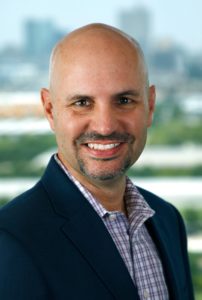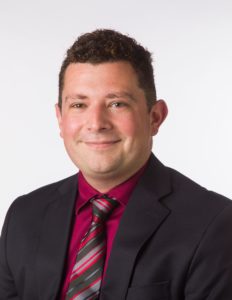Health care workers must address their mental health
Each year in the U.S., 300 to 400 physicians die by suicide. Such deaths are between 250% and 400% higher among female physicians when compared with women in other professions, and male doctors have suicide rates as much as 40% higher than the general population.
Despite a recent push by the U.S. surgeon general and data showing that depression and anxiety have increased in health care workers since the start of the COVID-19 pandemic, these workers are often the last to seek treatment, according to national experts and faculty at The University of North Texas Health Science Center at Fort Worth. A 2017 survey of 2,000 U.S. physicians found that roughly half thought they had met the criteria for a mental health disorder in the past but had not sought treatment.

“Many health care workers were trained in an environment of endurance, in which they didn’t feel permission or opportunity to express their own emotional and mental struggles in the process of their training,” said Dr. David Farmer Ph.D., LPC, LMFT, HSC Health clinician, assistant professor and director of Interprofessional Practice and Behavioral Health at HSC’s Texas College of Osteopathic Medicine.
“COVID placed additional stress and strains on health care providers, leading to increased burnout rates.” he continued. “With increased burnout rates across the health professions, we are seeing increasing rates of health care professionals choosing to leave practice prematurely.”
Mental health care can be a lifeline for struggling clinicians and, as with anyone grappling with mental health issues, there are myriad reasons that someone in the field might not seek care. These reasons can include worry they might be stigmatized, lack of time and (for doctors) fear that state medical board licensing bodies may punish them for disclosing mental health issues. According to a study that appeared in 2008, about 90% of state medical boards have licensing forms that include questions about an applicant’s mental health.
Health care burnout is hardly new. Before the pandemic, The National Academy of Medicine found that burnout took a toll on 35% to 54% of nurses and physicians, while 45% to 60% of medical students reported symptoms.
COVID-19 ratcheted up the pressure on those who take care of others for a living, as health care workers faced staffing shortages coupled with long hours, a deluge of critically ill patients and an increased risk to their own health plus the threat of passing along a deadly virus to loved ones.
A Mental Health America survey from June through September 2020, around the onset of the pandemic, found that 93% of health workers experienced stress, 86% reported anxiety, 76% said they felt exhaustion and burnout, and 41% reported loneliness.

“The last couple of years have been very stressful on society in general,” said Dr. Scott Walters, professor of health behavior and systems for HSC’s School of Public Health. “And there are certain people in our culture who are pressure points for that. They are the people who are going to take the stress.
“It’s like joints on a body,” he continued. “Every time you’re running, you’re coming down wrong on an ankle, let’s say. It’s the ankle that’s going to suffer. It’s not going to be these strong bones that stay relatively protected. So, health care workers are sort of a classic example because they’re absorbing all our fears, anxieties and health issues.”
Dr. Andrew Yockey, assistant professor in the HSC School of Public Health’s Department of Biostatics and Epidemiology, described the pandemic as a cascading effect: More people needed health and mental health services; workers in those fields felt obliged to take on a larger patient load; and those workers didn’t have the time or bandwidth to deal with their own issues.
“I think it’s very hard for clinicians, medical doctors and nurses because they become attached to their patients,” he said. “I wouldn’t say all of them, but I would say in some cases where maybe a patient or a client is doing terrible, that’s all you’re thinking about. So, in your mind, a hamster in a wheel is going 80 miles an hour.”

Yockey said it’s not just health care workers who have a hard time acknowledging their own mental health issues. Future health care workers can also fall into the same traps.
For example, the American Foundation for Suicide Prevention found medical students suffer from depression at rates 15% to 30% greater than the general population.
Farmer said it’s important for employers and institutions to encourage health care workers to prioritize their own well-being. Part of that equation involves deprogramming themselves from the attitude of invincibility.
“Within health care, we’re trying to break down that culture of endurance and train health care workers to be in tune with their own emotional, mental and physical well-being,” he said. “We’re encouraging self-evaluation and openness to peer feedback — to help identify and monitor the signs and symptoms of burnout. Our goal is to catch and treat emotional and mental health care needs early.”
“Just as our dedicated health care providers work diligently to help their patients focus on overall well-being, we want to help them apply those same principles in monitoring their own well-being.”
HSC offers free counseling to students and staff and provides a list of providers who accept the state’s health plan.







Social media